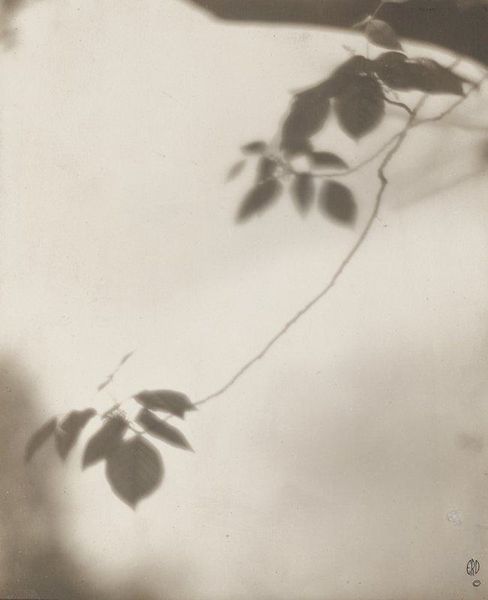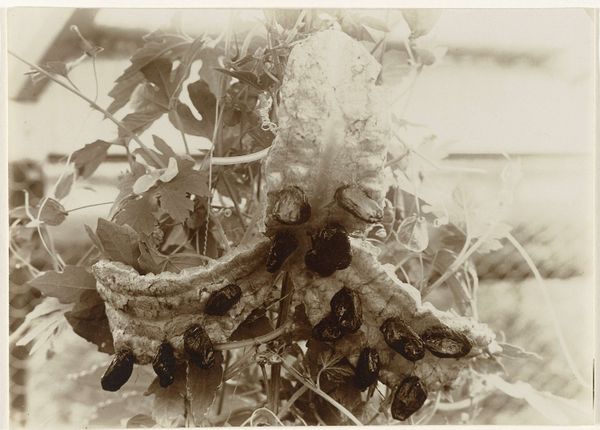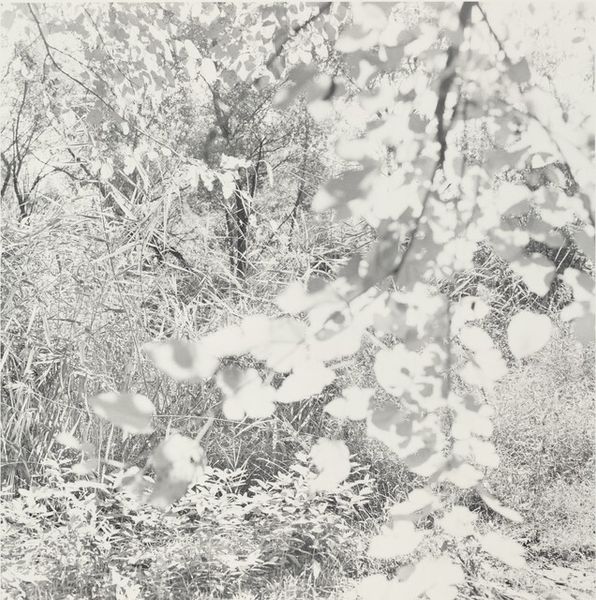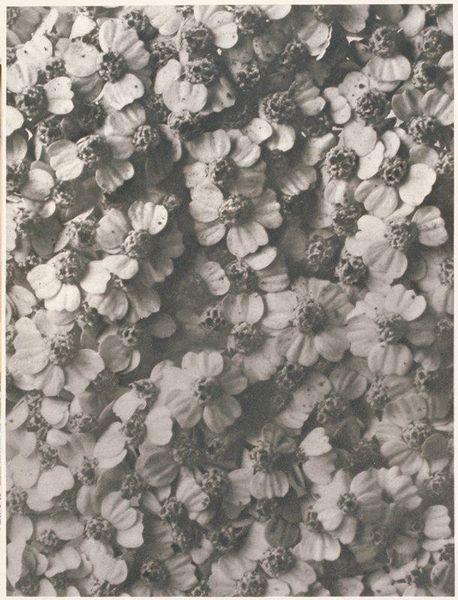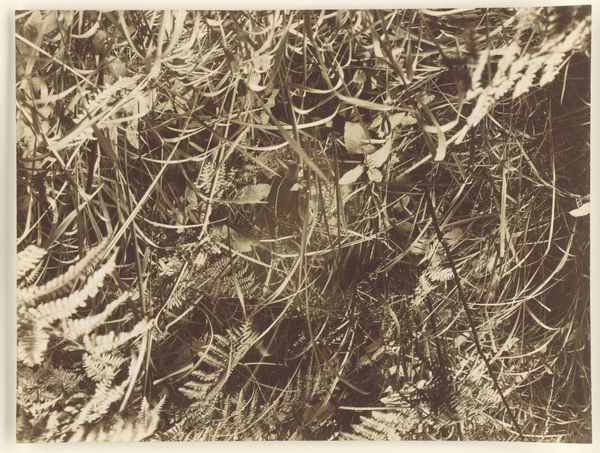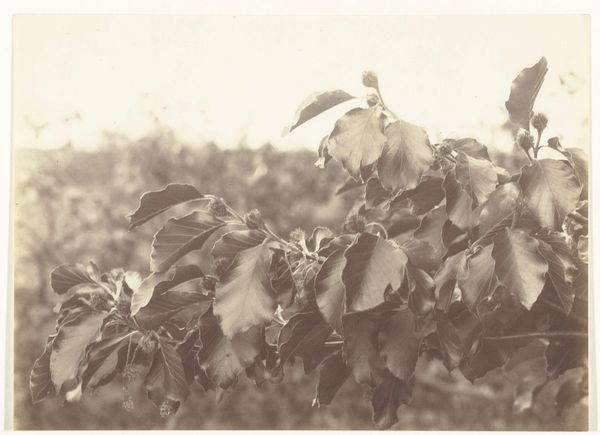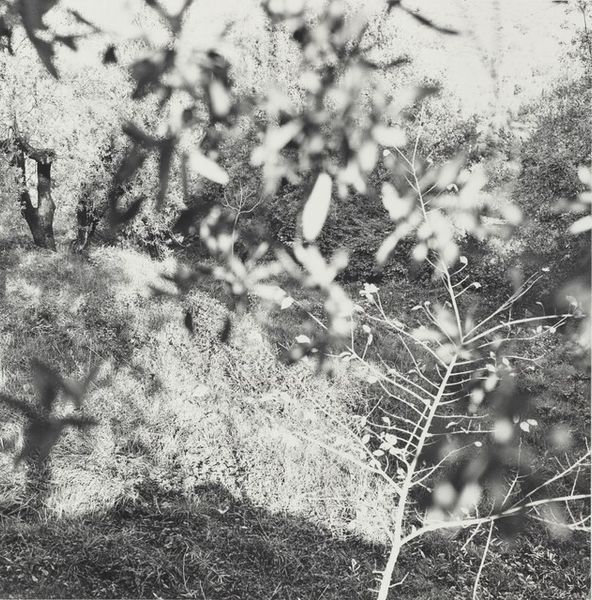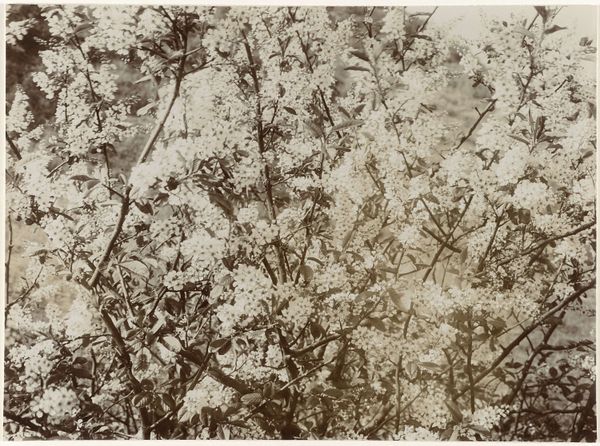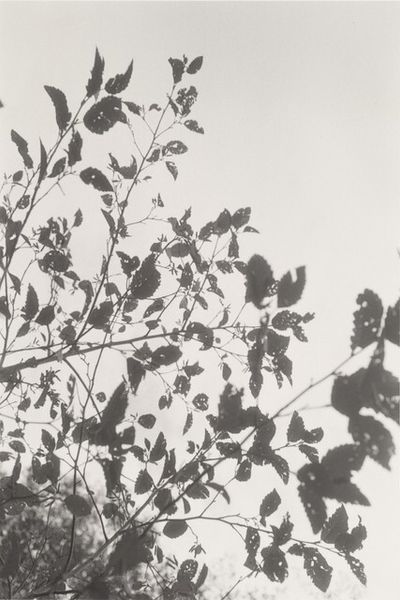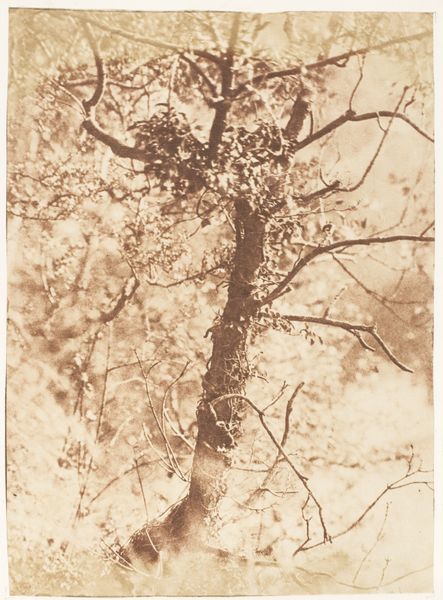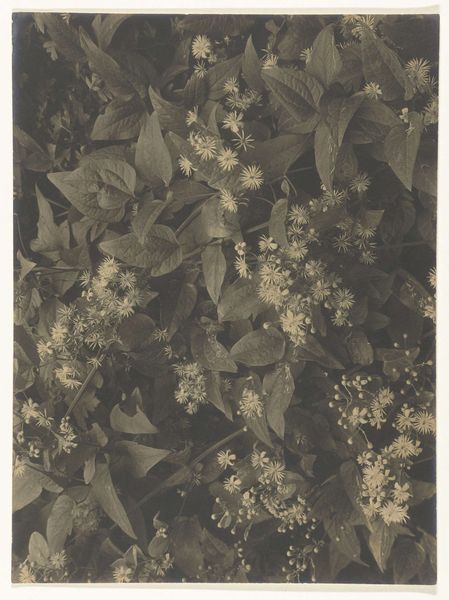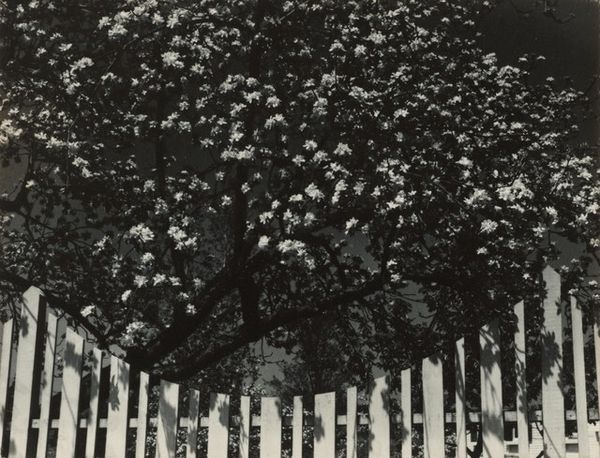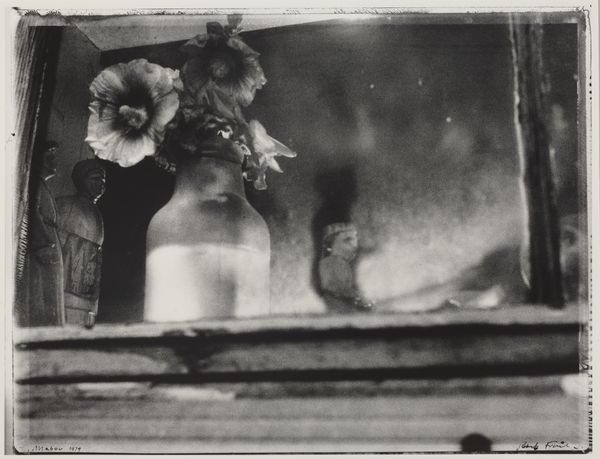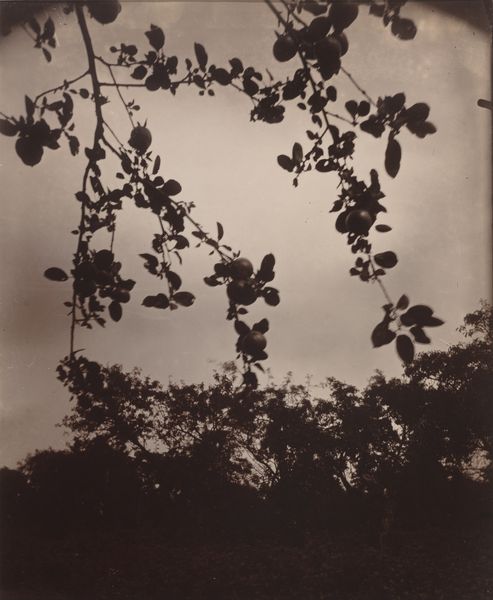
photography
#
pictorialism
#
photography
Dimensions: height 222 mm, width 165 mm
Copyright: Rijks Museum: Open Domain
Curator: Richard Tepe, between 1900 and 1930, created this exquisite photograph titled “Plantstilleven.” It resides here at the Rijksmuseum. Editor: What strikes me immediately is its somber tone. The sepia-toned print gives it a sense of antiquated beauty, like a memory fading at the edges. Curator: Yes, the pictorialist style truly elevates the material. The soft focus and delicate tonal range contribute to an atmosphere of quiet contemplation. I’m drawn to how Tepe manipulates light; notice how it catches the delicate petals. Editor: I'm also intrigued by the arrangement of the flowers and foliage. The upward growth of the flowering plants towards an unseen light. Do the plants, perhaps, symbolize an earthly striving toward enlightenment, maybe suggesting spiritual yearning? Curator: It's definitely an intriguing interpretation! Considering the time it was made, we can consider how photography at the time was trying to validate itself as a higher form of art. Maybe it shows a naturalistic form or simply an engagement of natural patterns. There’s the contrast between the sharper focus on some of the flowers and the blur of others, which creates a sense of depth. Editor: And let’s not overlook the enduring significance of floral motifs in art. They serve to connect us to ideas about ephemeral beauty. Maybe Tepe meant for us to find symbolic links with life’s temporality and inevitable transformation through nature itself? Curator: It’s very likely! I appreciate you raising the artwork’s possible psychological undercurrent. Tepe encourages us to linger in the liminal space of what he photographs by manipulating pictorialist techniques that emphasize mood and texture. Editor: The appeal resides not only in what we see, but what is left to the realm of feeling. A good picture leaves things unsaid and invites interpretations to come into being in the viewers' minds. Curator: I think the interplay of light and shadow and how that guides your viewing process truly reveals how striking of an effect and impact photography of this period can still elicit. Editor: It allows for introspection and contemplation. Thank you, Tepe, for creating such a gorgeous and symbolic work.
Comments
No comments
Be the first to comment and join the conversation on the ultimate creative platform.
